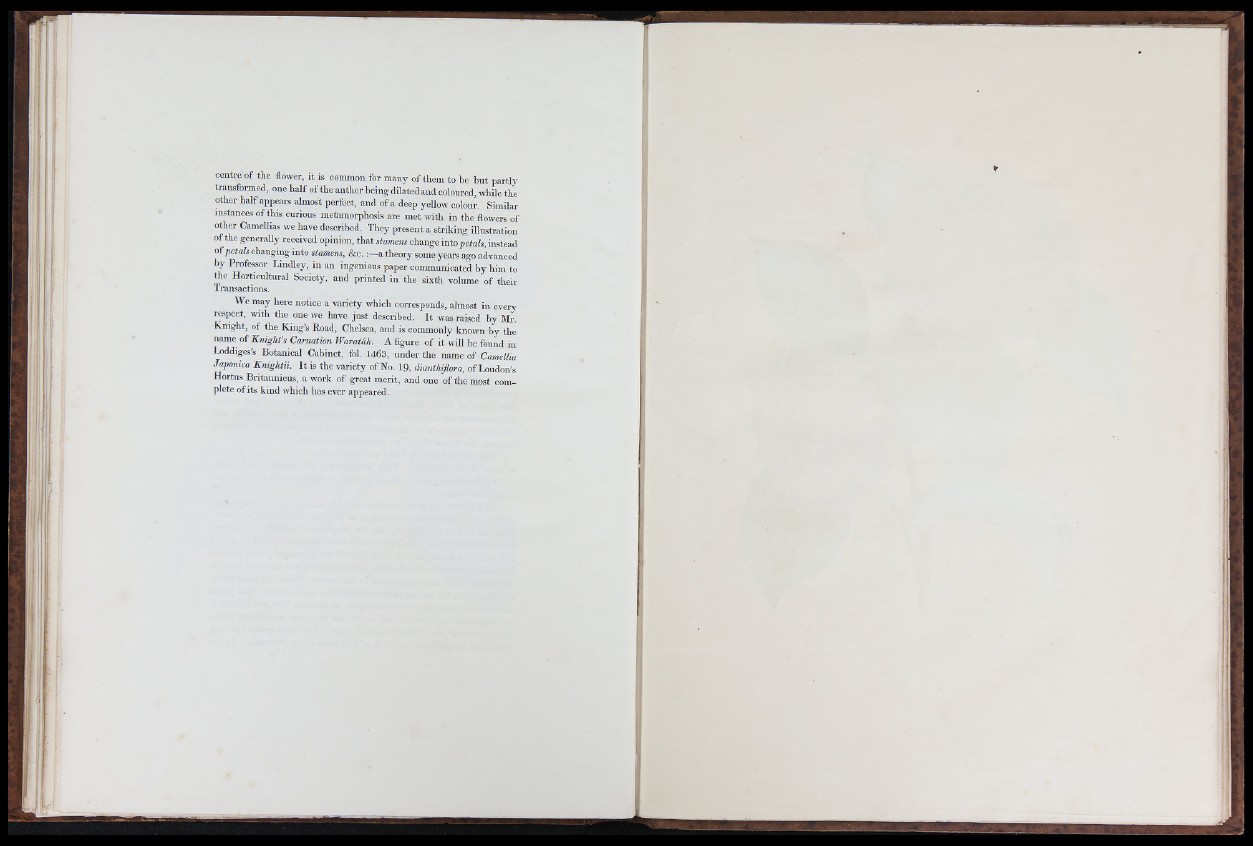
centre o f the flower, it is common for many of them to be b u t partly-
transformed. one half of the anther being dilated aud coloured while the
other h a lf appeai-s almost perfect, and of a deep yellow colour. Similar
instances o f tins curious metamorphosis are met with in th e flowers of
other Camellias we have described. They present a strik in g illustration
of the generally received opinion, th a t stamens change into petals, instead
o(petals changing into stamens, &c. : - a theory some years ago advanced
by Professor Lindley, in an ingenious paper communicated by him to
tlie Horticultural Society, and printed in the sixth volume of their
Transactions.
We may here notice a variety which corresponds, almost in every
respect, with th e one we have ju s t described. I t was raised by Mr.
Kn ig h t, of th e Kin g ’s Road, Chelsea, and is commonly known b y tlie
name o í K tiig h fs Carnation Waratáh. A flgure of it will be found in
Loddiges’s Botanical Cabinet, fol. 1463, under the name of Camellia
Japónica Knighlii. I t is the variety of No. 19, dianthißora, of Loudon’s
Hortus Britannicus, a work of great merit, and one of the most complete
of its kind which has ever appeared.